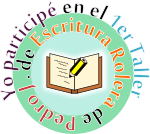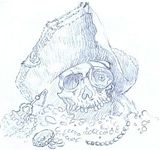http://www.wizards.com/dnd/Article.aspx?x=dnd/drdd/20120215
Información:
Developing Heroes of the Elemental Chaos
Design & Development
By Jeremy Crawford
roiling realm of creation and destruction, the Elemental Chaos is the source of matter itself. The plane's influence extends across the D&D cosmos and takes dizzyingly diverse forms—a diversity reflected in Heroes of the Elemental Chaos. The book provides elementally themed options for a handful of classes (druid, monk, sorcerer, warlock, and wizard), options that allow those classes to manifest the plane's chaotic magic. Characters of other classes can also draw on that magic by taking one of ten character themes introduced in the book. Rounding out the supplement's elemental options are feats, paragon paths, magic items, and more.
Like its predecessor in the Player's Option series, Heroes of the Feywild, the book opens with a story overview. The first chapter discusses not only the Plane Below, but also the role of elemental power in the multiverse, and the chapter ends with a roster of the known primordials, the fearsome entities who warred with the gods, and lost, at the beginning of time. Many of these deathless beings, such as Cryonax and Imix, first appeared in 1st Edition (and Cryonax roars on the book's cover).
In developing the diverse content, I was joined by Chris Sims and Tanis O'Connor, with assistance from Rodney Thompson. The four of us took the book's game mechanics, all designed by Robert Schwalb and Rich Baker, and refined them, making sure that they both hit the right story notes and worked well in play. As we did the balance portion of our development, we consulted the feedback of our able playtesters.
The book presented a number of interesting development challenges. A prime example is the sorcerer subclass, the elementalist. The elementalist is to the sorcerer what the slayer is the fighter (see Heroes of the Fallen Lands). The subclass is meant to be a straightforward option for the player who wants to play an arcane spellcaster with little fuss. Big damage, with an elemental theme, is what the elementalist is all about. The trick is that the simple is almost always more difficult to get right than the complex, so development of the subclass involved three major revisions, each one edging closer to the right mix of damage output and simplicity of play.
Despite the subclass's emphasis on damage, when I asked Tanis, the elementalist's developer, what stood out for her about it, she chose the utility powers! Those powers are, indeed, notable, since many of them involve dramatic manipulation of the elements around the sorcerer, whether calling forth winds, raising up columns of stone, or tearing open a rift to the Plane Below itself.
The book's character themes were an entirely different sort of challenge. Developing a theme is similar to developing a paragon path: a combination of story and mechanics expressed in just a few game elements. Making sure each theme speaks evocatively about a character who takes it can be tricky.

Here's what Chris, the themes' developer, had to say about them:
The design intent for the themes transcended the simple desire to give characters access to elemental power. These themes were meant to give a sense of what people are like when they live in the Elemental Chaos, in realms the plane touches, or in areas the plane influences. The challenge became matching this intent with the mechanical and narrative expression of each theme. We made sure most of the themes changed a character's origin to elemental, and almost all grant access to the Primordial language, both traits representing extraplanar heritage or customs. The themes then diverged, each one cleaving to the intended story for the elemental energy or influence it represents.
With the demon spawn, for instance, we made sure that higher-reward powers linked with demonic craziness as the higher risk for using those powers. The firecrafter changed during development to include more attack powers, because wielding fire means searing your foes. The watershaper, instead, included esoteric applications of water, focusing on the element's ability to flow, nurture, and shape. Mechanics in each theme give a very different feel to a character who takes the theme, despite the unifying elemental premise. Each character, in turn, is possibly indicative of a larger organization, kingdom, or culture in the world or multiverse. My hope is that DMs and players embrace this potential, creating significant campaign elements from the kernels the themes contain. In my mind, beyond providing for character development, that's what a theme is supposed to do for the game.
One of my favorite pieces of the book is its section on elemental companions, element-touched creatures that can aid a character both in and out of combat. In their original version, the companions could be taken by anyone with almost no prerequisite, which resulted in certain characters having too many pets by their side. As the companions evolved in development, they turned into an option for characters who lack arcane familiars. After taking two feats, Born of the Elements and Elemental Companion, a character can choose one of twelve creatures as a companion, an embodiment of one of the myriad aspects of the Elemental Chaos.








No hay comentarios:
Publicar un comentario